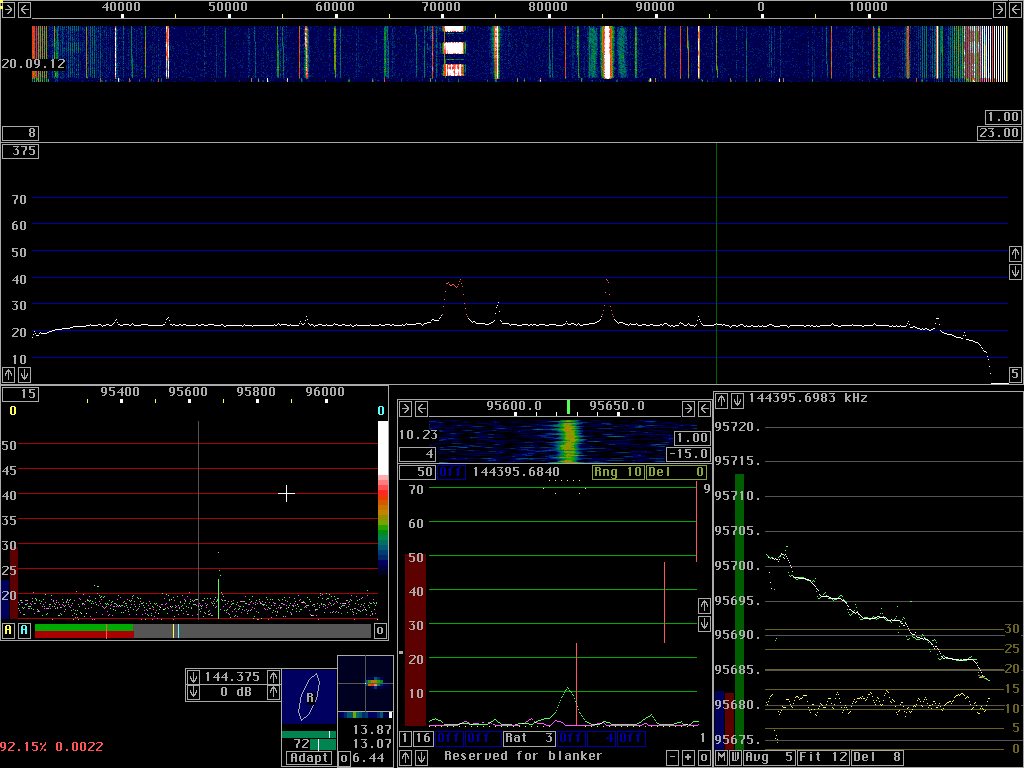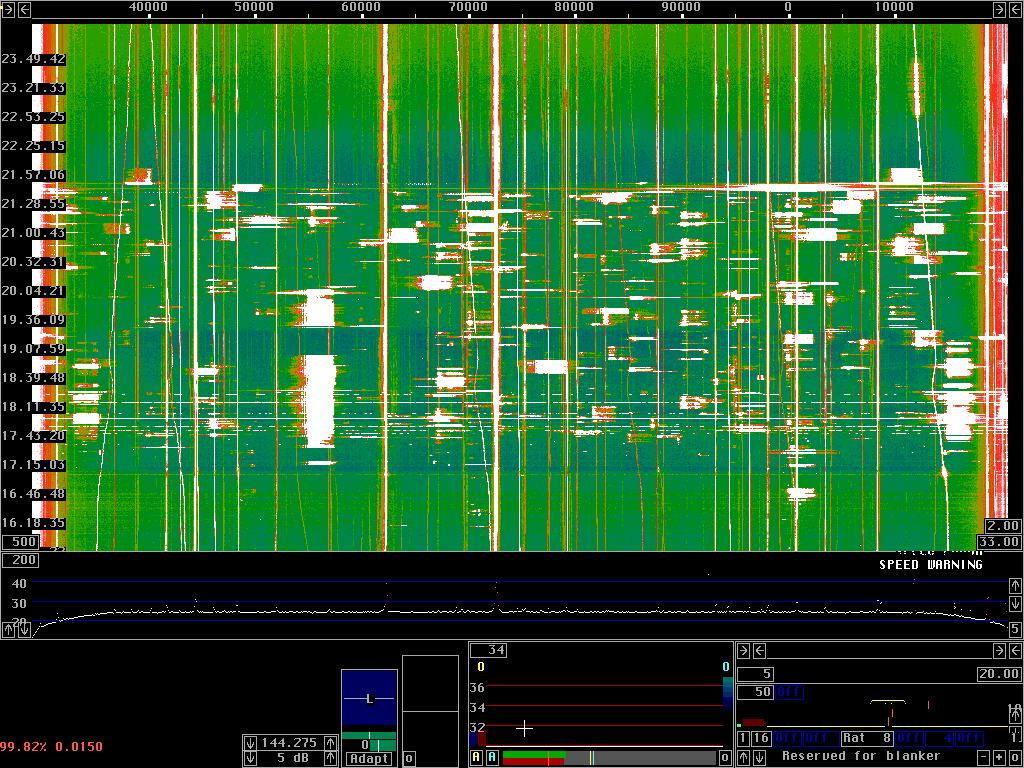
Fig. 1. Full processing in weak signal CW mode with a 266 MHz Pentium MMX, a Delta44 and the WSE converters.
Trading dynamic range for speedLinrad allows mediocre filters that have the benefit of less cpu load. The way it is done is by selecting a low order for the window functions. On a slow computer like the 266 MHz Pentium MMX one has to run without any window in order to have enough cpu time for the second fft which is necessary for the noise blanker.Fig. 1 is a screen dump that shows the screen when the 266 MHz Pentium MMX is processing the data from a Delta 44 connected to the WSE converters receiving a slowly drifting signal (a spur) on 144 MHz. |

Fig. 1. Full processing in weak signal CW mode with a 266 MHz Pentium MMX, a Delta44 and the WSE converters. |
When no window is used, the bandwidth of each fft bin is only one pixel. This is when a signal has a frequency that fits exactly on a bin. Signals that fall right between two bins spread some of their energy over a wide frequency range, that is why the dynamic range is mediocre when Linrad is operated this way. The AFC can not interpolate well between fft bins, therefore the signal frequency is not followed particularly well as can be seen in the AFC window. The linear frequency drift becomes a stepped function that will not convert the signal precisely to the center of the bandpass filter in the baseband. The maximum error is less than 2 Hz so the precision is sufficient for weak signal CW, the extra bandwidth needed to accomodate the frequency error is less than 10 %. The parameters used for fig. 1 can be downloaded here parmmx.tar (51200 bytes) Linrad as a band monitor on a slow computerHaving an obsolete computer running Linrad at a large bandwidth is a way to detect band openings. For this purpose it is necessary to use the noise blanker at my location, but there is no need for any audio output or AFC so it is possible to use a sine window so the dynamic range is compatible with the transmitters commonly used by radio amateurs. Fig. 2. Shows the screen as it looked July 07 2004 at 0100 local time. |

Fig. 2. Linrad as a band monitor. The Scandinavian activity contest takes place between 19.00 and 23.00 local time the first Tuesday every month. |
In case a sporadic E opening or something else happens that brings some activity it will immediately become visible on the monitor screen. When this screen dump was made, Linrad had been running for more than one week. The many overrun errors have occured at night when Red Hat 9 runs the database update and steals a lot of cpu time. To SM 5 BSZ Main Page |